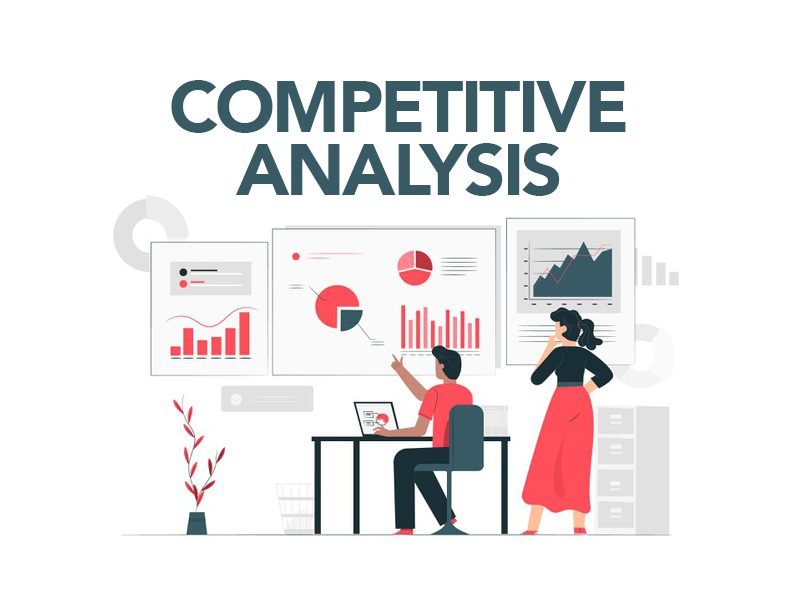Competitive Analysis: The Strategic Imperative for Market Leadership
In the relentless arena of modern business, success is not a static achievement but a dynamic process of continuous adaptation and strategic foresight. At the core of this process lies competitive analysis, a disciplined methodology for understanding the intricate forces that shape an industry. [1][2] It transcends mere observation of rivals; it is a systematic evaluation of competitors’ strategies, strengths, and weaknesses to inform and sharpen an organization’s own strategic direction. [3][4] By embedding this analytical rigor into the fabric of strategic planning, a business can move from a reactive posture to a proactive one, not only navigating the competitive landscape but actively shaping it to its advantage. [5][6] This deep, intelligence-driven approach is what separates transient market players from enduring industry leaders, providing the insights necessary to anticipate market shifts, mitigate risks, and seize opportunities with conviction. [1][7] The ultimate goal is to cultivate a sustainable competitive advantage, a unique and defensible position that delivers superior value to customers and, consequently, superior returns to the organization. [8]
A truly effective competitive analysis framework is not a monolithic, one-size-fits-all template but a multi-faceted and dynamic tool. [9] It must be adaptable to the specific context of the industry and the strategic questions at hand. While foundational models like SWOT analysis and Porter’s Five Forces provide a crucial starting point for assessing internal capabilities and external market pressures, a modern approach demands a more nuanced and holistic perspective. [10][11] This involves integrating advanced techniques that can decipher the complex interplay of market dynamics. For instance, Strategic Group Mapping allows a company to visualize its position relative to direct competitors based on key strategic dimensions like price and product variety, revealing clusters of rivals and open strategic spaces. [12] Furthermore, in industries characterized by rapid innovation and high turnover, such as the Fast-Moving Consumer Goods (FMCG) sector, analysis must focus intensely on competitors’ product development pipelines, marketing tactics, and supply chain efficiencies to anticipate their next moves. [13][14] The synthesis of these varied analytical lenses provides a comprehensive and multi-dimensional understanding of the competitive environment, enabling a firm to craft strategies that are not only robust but also agile and responsive to change. [15]
The evolution of competitive analysis has been profoundly shaped by the digital revolution, which has unlocked unprecedented access to data and sophisticated analytical capabilities. The integration of big data, artificial intelligence (AI), and machine learning (ML) has transformed competitive intelligence from a largely manual, retrospective exercise into a forward-looking, predictive discipline. [11][16] Predictive analytics utilizes historical data, statistical algorithms, and ML techniques to forecast future outcomes, such as competitor price changes, new product launches, or shifts in marketing strategy. [17][18] By harnessing these technologies, companies can move beyond simply reacting to competitor actions to proactively anticipating them. [19][20] For example, AI-powered tools can monitor a competitor’s digital footprint in real-time—from social media sentiment to job postings and patent filings—to generate early warnings of strategic shifts. [11] This allows an organization to make faster, more informed decisions, effectively creating a strategic advantage by reducing uncertainty and capitalizing on opportunities before rivals can react. [16][19] As exemplified by market leaders like Amazon, which leverages its supply chain mastery, and Netflix, which rode the wave of streaming innovation, a forward-looking, data-driven understanding of the competitive landscape is a powerful engine for sustained success. [8]
However, the pursuit of competitive intelligence must be anchored in a strong ethical framework. The line between legitimate, aggressive intelligence gathering and unethical or illegal corporate espionage can be perilously thin. [21] Ethical practice in competitive intelligence is not merely about legal compliance—avoiding acts like theft of trade secrets or hacking—but about upholding principles of transparency, fairness, and respect for privacy. [22][23] This means practitioners must be honest about their identity and purpose when gathering information and must not misrepresent themselves to gain access to confidential data, such as posing as a customer to extract sensitive pricing information from a competitor. [21][22] Organizations have a responsibility to establish clear internal codes of conduct for competitive intelligence activities, ensuring that employees, especially those hired from competitors, honor non-disclosure agreements. [23][24] The Society of Competitive Intelligence Professionals (SCIP) provides guidelines that, while general, emphasize professionalism and adherence to laws. [24] Ultimately, building a sustainable competitive intelligence function requires cultivating a culture of integrity; the strategic advantages gained through unethical means are often short-lived and can lead to severe reputational damage and legal consequences, undermining the very foundation of long-term success. [21][25]



